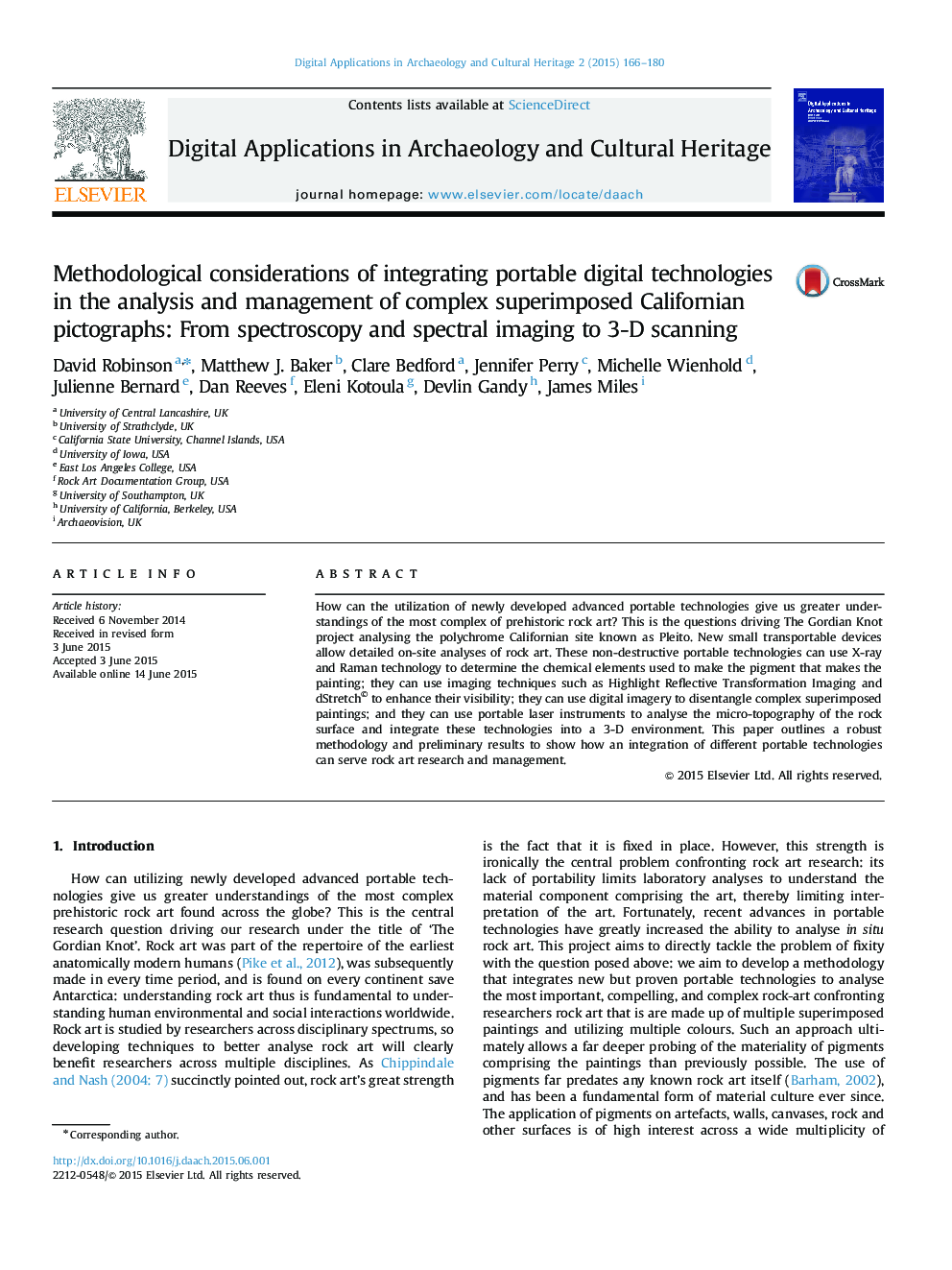| Article ID | Journal | Published Year | Pages | File Type |
|---|---|---|---|---|
| 108048 | Digital Applications in Archaeology and Cultural Heritage | 2015 | 15 Pages |
•Integrating portable technologies to understand the most complex rock art.•Proposing a methodology to address research and heritage management goals.•Using pXRF and pRaman in conjunction with experimental approaches to tease out pictograph recipes.•Proposing integrating H-RTI with dStretch© to clarify panel compositions and using layer separation techniques to construct sequences and analyse ‘set-pieces.’•Using laser scanning to create 3-D representation of the rock-art site while establishing a base-line grid for integrating spectral and imaging analyses.
How can the utilization of newly developed advanced portable technologies give us greater understandings of the most complex of prehistoric rock art? This is the questions driving The Gordian Knot project analysing the polychrome Californian site known as Pleito. New small transportable devices allow detailed on-site analyses of rock art. These non-destructive portable technologies can use X-ray and Raman technology to determine the chemical elements used to make the pigment that makes the painting; they can use imaging techniques such as Highlight Reflective Transformation Imaging and dStretch© to enhance their visibility; they can use digital imagery to disentangle complex superimposed paintings; and they can use portable laser instruments to analyse the micro-topography of the rock surface and integrate these technologies into a 3-D environment. This paper outlines a robust methodology and preliminary results to show how an integration of different portable technologies can serve rock art research and management.
Graphical abstractFigure optionsDownload full-size imageDownload as PowerPoint slide
